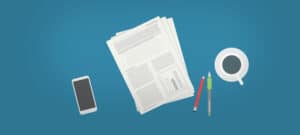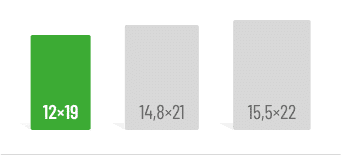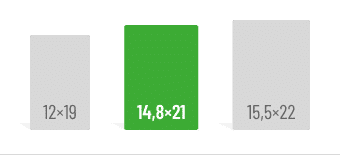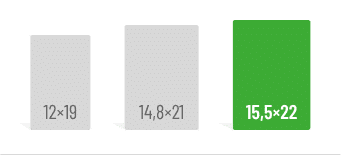First things first:
- These citation styles are particularly widespread: APA, MLA, Harvard, Chicago Manual of Style, and Vancouver.
- To make your work easier, it’s best to use a reference management program.
What is a citation style?
A citation style dictates how citations should be formatted. This includes how sources are referenced within the text — such as in parentheses immediately following the quote, in a footnote, or in an endnote. The citation style also specifies what details the bibliography must include and how these should be organized. Each field of study has its own requirements for source citation, resulting in unique conventions and guidelines. Before starting your work, make sure to familiarize yourself with the preferred citation style of your institution. In some cases, institutions establish their own standards, which you’ll need to follow in your written assignments.
The Top 5 Citation Styles
APA (American Psychological Association)
This citation style is widely used in the social sciences and psychology. In APA style, you include a parenthetical citation with the author’s name and the publication year directly after the quote in your text. In the bibliography, the publication year is listed immediately after the author’s name.
Reference in the text: “Lorem ipsum” (Mustermann, 2022)
Reference in the bibliography: Mustermann, M. (2022). Example of an article title. (E. Musterfrau, Ed.), Example of a book title. Munich: GRIN Publishing.
MLA (Modern Language Association)
MLA is primarily used in language and literary studies. Here, too, a brief citation is included in the text, but it contains the author’s name and the page number. In the bibliography, both first and last names are written out in full, unlike in APA style.
Reference in the text: “Lorem ipsum” (John Doe 7)
Reference in the bibliography: Mustermann, Max. “Example of an Article Title.” Ed. Erika Musterfrau. Example of a Book Title. Munich: GRIN Publishing, 2022.
Harvard
This citation style is mainly used by economists. The in-text citation works similarly to APA, but in the bibliography, the complete page range of the article is required as an additional detail. Additionally, editors are not placed in parentheses but are listed directly after the book title.
Reference in the text: “Lorem ipsum” (Mustermann, 2022)
Reference in the bibliography: Mustermann, M. (2022). “Example of an Article Title.” Example of a Book Title. Edited by E. Musterfrau. Munich: GRIN Publishing, pp. 7-16.
Chicago A (Chicago Manual of Style)
This citation style is popular in the humanities. References to quotes in the text are added as footnotes and should include the author’s name, title, place, publisher, publication year, and page number. The bibliography contains the same information, but the last name is listed first to allow for alphabetical sorting.
Reference in a footnote: John Doe, Example of the title of an article, (Munich: GRIN Verlag, 2022), 7.
Reference in the bibliography: John Doe, Max. “Example of the title of an article.” Edited by E. Musterfrau. Example of a book title. Munich: GRIN Verlag, 2022.
Vancouver (International Committee of Editors of Medical Journals (ICMJE))
This citation style is particularly popular among medical and natural science professionals. Instead of short references or footnotes, it uses numbers in square brackets within the text. The references in the bibliography are numbered accordingly, allowing readers to locate the correct source based on the assigned number.
Reference in the text: “Lorem ipsum” [1]
Reference in the bibliography: [1] John Doe M. Example of the title of the article. Musterfrau E, editor. Example of a book title. Munich: GRIN Verlag, 2022, pp. 7-16.
Citation Styles made easy with Reference Management Software
Applying a citation style correctly can sometimes be challenging. Additionally, all references and citations in a paper must be formatted consistently. Doing this manually requires a lot of patience, and you should also plan for a thorough review before submission. Using reference management software like Citavi or EndNote makes this process much easier. These tools integrate seamlessly with most word processors, such as Microsoft Word. Reference management programs come with a wide range of predefined citation styles, including all the commonly used ones. If your institution has its own guidelines, you can also customize or create citation styles to meet those requirements.
All you need to do is import your sources into the program and select your citation style. Whenever you insert a quote into your text, you can easily add the source in the chosen citation style using your reference management software. The citation will be formatted correctly and consistently throughout your document. The software also automatically generates a bibliography at the end of your text—formatted in the selected style, alphabetically sorted, and guaranteed to be complete!
Sources:
Frequently asked questions
The Vancouver citation style uses numbered references within the text that correspond to the respective entries in the bibliography.
The top five citation styles include APA, MLA, Harvard, Chicago Manual of Style, and Vancouver.
The correct citation style depends on your field of study. Find out from your institute which citation style is preferred.
With programs like Citavi or EndNote, you can easily manage citation styles and apply them consistently by importing your sources and selecting the style you want.










